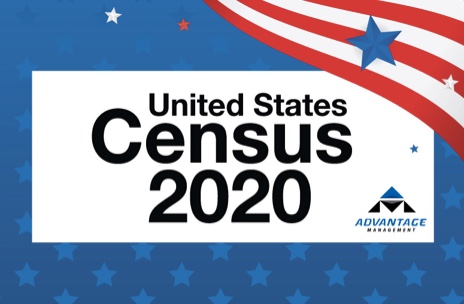In the midst of a pandemic there is something very important that many people have over looked, and that is completing the 2020 Census. I am sure you have received something in the mail but in case you did not there are many ways you can participate in the 2020 Census. Originally the deadline to participate was July 31st but it has been extended to October 31st. During the “Self-Response Phase” you can respond online, by phone or mail.
Participating in the census is required by law even if you recently completed another survey from the Census Bureau. A complete and accurate count is critical for you and your community, because the results of the 2020 Census will affect community funding, congressional representation, and more.
The 2020 Census asks a few simple questions about you and everyone who was living with you on April 1, 2020.
Please complete your form online, by going to my2020census.gov
Find out more about each of these methods below:
Please note that if you are responding online, you must complete the census in one sitting, as you don’t have the ability to save your progress. You can see the questions the census asked.
Even if you did not receive an invitation to respond from the Census Bureau, you may respond online.
The Census Bureau began mailing paper questionnaires in mid-April to homes that had not yet responded. If you have not already responded, please complete and mail back your form as soon as you receive it. And if you prefer, you still have the option of responding online or by phone instead.
Who Should Respond…
The 2020 Census counts everyone living in the United States and its five territories (Puerto Rico, American Samoa, the Commonwealth of the Northern Mariana Islands, Guam, and the U.S. Virgin Islands).
One person should respond for each home. That person must be at least 15 years old. They should live in the home or place of residence themselves and know general information about each person living there. (For more information, visit Questions Asked.)
Everyone Counts…
The Census Bureau has specific operations and processes in place to count everyone, including those in group living situations such as college dorms, nursing homes, military barracks, and prisons.
What Is the 2020 Census…
Why We Conduct This Count…
The census provides critical data that lawmakers, business owners, teachers, and many others use to provide daily services, products, and support for you and your community. Every year, billions of dollars in federal funding go to hospitals, fire departments, schools, roads, and other resources based on census data.
The results of the census also determine the number of seats each state will have in the U.S. House of Representatives, and they are used to draw congressional and state legislative districts.
It’s also in the Constitution: Article 1, Section 2, mandates that the country conduct a count of its population once every 10 years. The 2020 Census will mark the 24th time that the country has counted its population since 1790.
Census and Covid-19…
You should be counted where you were living and sleeping most of the time as of April 1, 2020. If you are responding for your home, count everyone who was living and sleeping there most of the time as of April 1, 2020. This includes young children, foster children, roommates, and any family members or friends who are living with you, even temporarily.
Please note that if someone was staying with you temporarily on April 1 due to the COVID-19 situation, they should be counted where they usually live. This includes college students, who should still be counted at school, even if they are home early because of the COVID-19 situation. If they live in student housing, the college will count them. If they live off campus, they should complete the census for their off-campus address and include any roommates or other people living there.
If someone is staying with you on April 1 who doesn’t have a usual home elsewhere, please include them in your response.
People in some living situations—including students, service members, and people in health care facilities—may have questions about how to respond or where they should count themselves. You may also have questions if you recently moved, have multiple residences, or have no permanent address.


Recent Comments